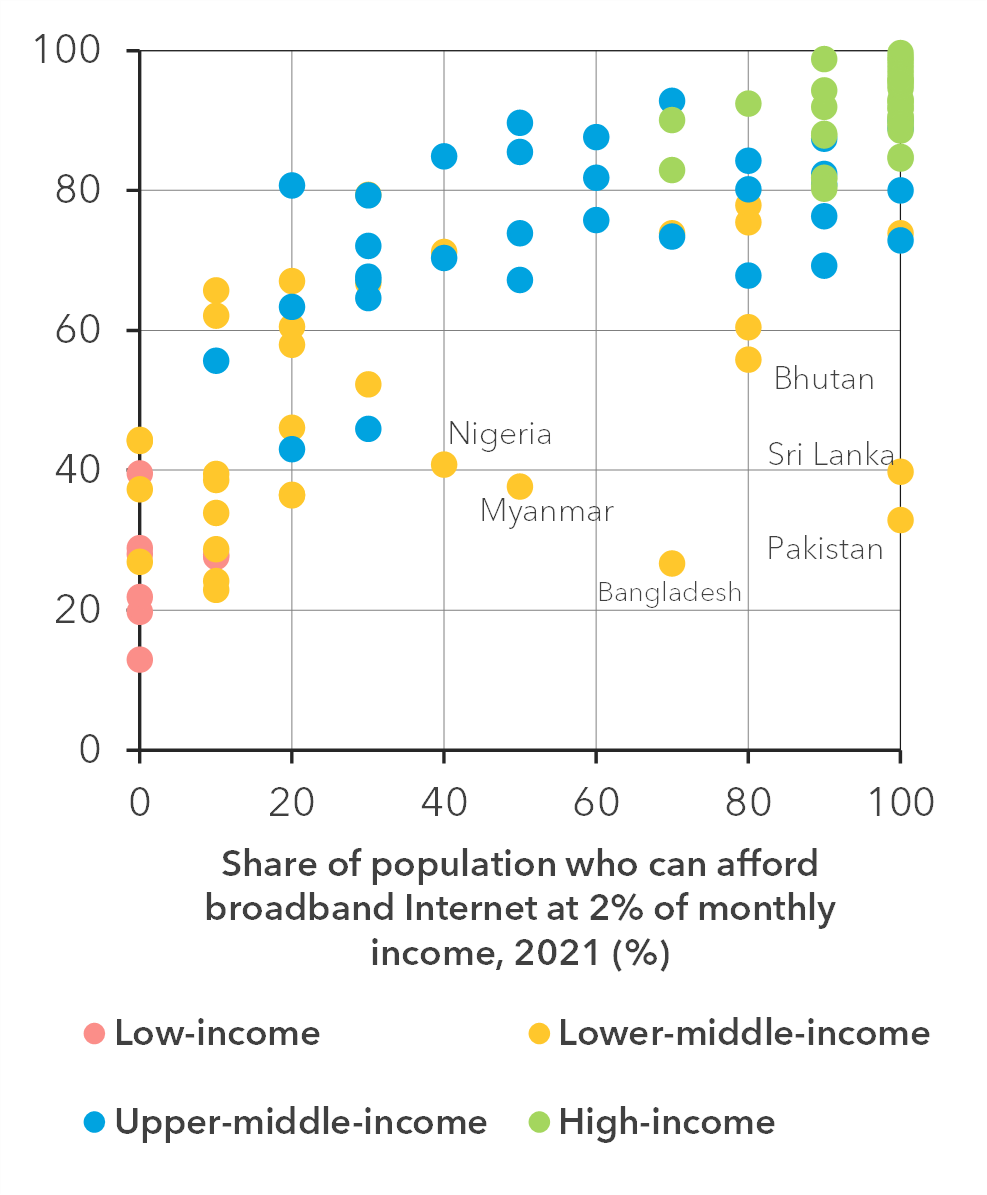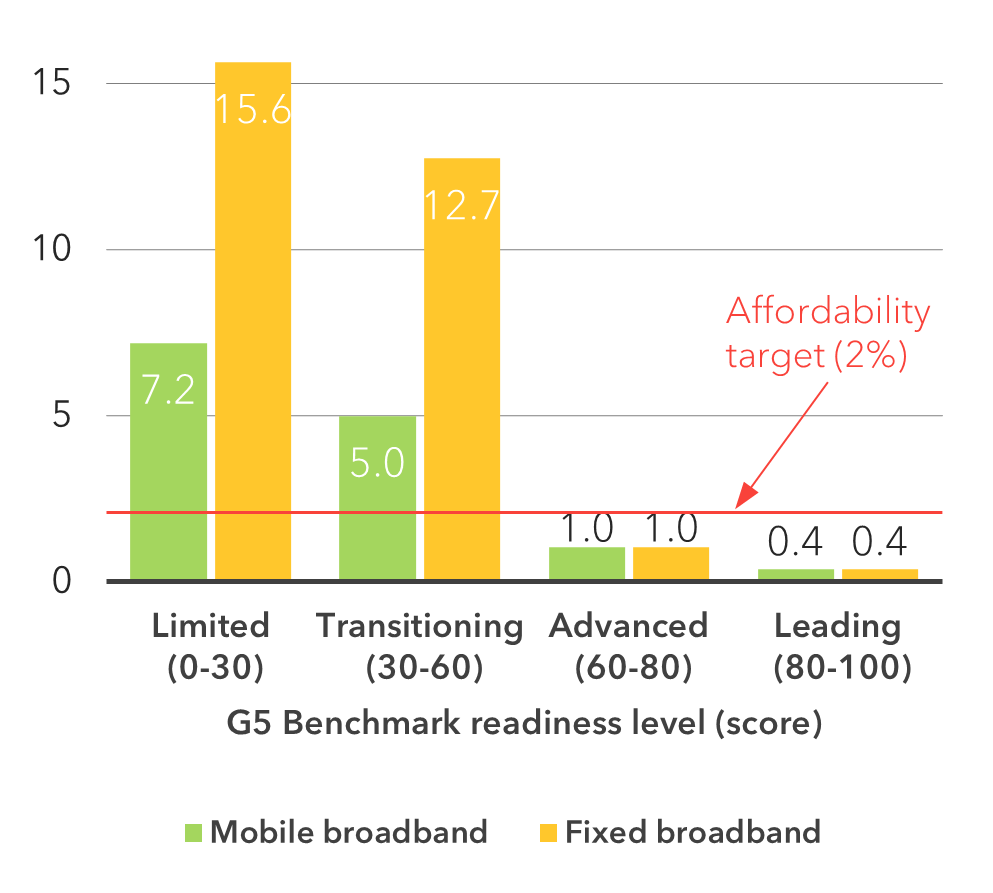Millions of people remain offline, or are not meaningfully connected, because of the high cost of the device and/or subscription. The global picture of affordability is one of many stark contrasts. Connecting to the Internet remains prohibitively expensive for many in low- and lower-middle-income economies while it is relatively cheap in richer countries. There are also less-visible divides within countries due to income inequalities. Even in countries where the average earner can afford an entry-level broadband service, poorer segments of the population often cannot. The “value-for-money” is also uneven across countries. Not only are entry-level fixed broadband connections out of reach in lower-income economies, but connection speeds are also far lower there than in high-income economies.
The share of population using the Internet (%)
Affordability is a major (even if not the only) barrier to connectivity. The larger the share of population that can afford an entry-level broadband basket, the more people use the Internet. Some lower-middle-income economies that are exceptions to this trend suggest the presence of other barriers preventing Internet use

Source: ITU
The past decade has seen significant improvements in affordability of broadband access, especially mobile broadband, but the majority of low- and middle-income economies fall short of the global affordability target. The economic crisis triggered by the COVID-19 pandemic has set back progress.
Affordability and connectivity go hand in hand. The critical challenge for policies with a digital development focus is to release countries trapped in a vicious cycle of unaffordable broadband prices that perpetuate low subscription rates. These are countries where factors such as physical geographic conditions, uneven population distribution or low levels of disposable income deter investments, where market size does not drive down prices, while unaffordable prices deter new subscribers.
Evidence suggests that affordability and the maturity of the regulatory environment go hand in hand. Countries showing the highest readiness levels in collaborative digital regulation and with tailored competition policy have the most affordable broadband service prices. This offers scope for countries to increase affordability as they improve their regulatory policy environment.
Average broadband prices (% of GNI per capita) are lower where the regulatory environment is more mature
The G5 Benchmark readiness level measures the maturity of the regulatory environment based on a wide range of indicators. Most affordable broadband prices (for fixed- as well as mobile broadband) are found in countries with more mature, collaborative, cross-sector digital regulation.

Source: ITU
Governments wishing to reduce the cost of broadband access can resort to a variety of measures, from conditioning regulatory approval on the provision of low-cost services, to negotiating public-private partnerships balancing investment incentives for network deployment with price capping. Governments may also consider reducing taxes or subsidizing access to free or low-priced devices, as well as free connection in public administration facilities such as libraries, hospitals, or schools or at other public hot spots. Measures to ensure affordable access to universal meaningful connectivity will ideally form part of more comprehensive broadband strategies.